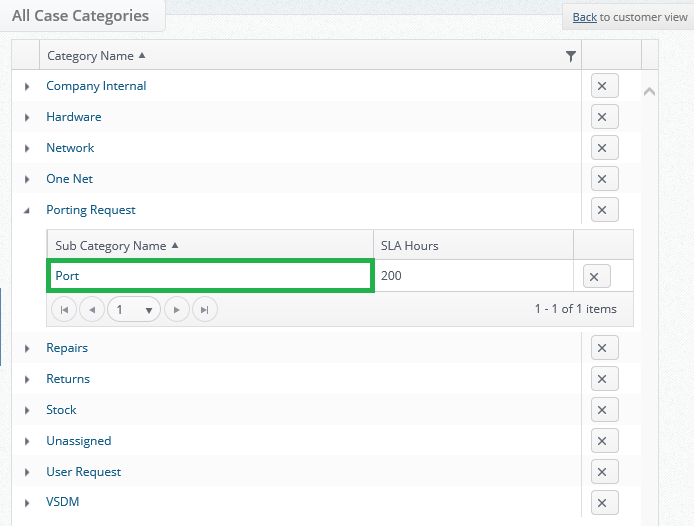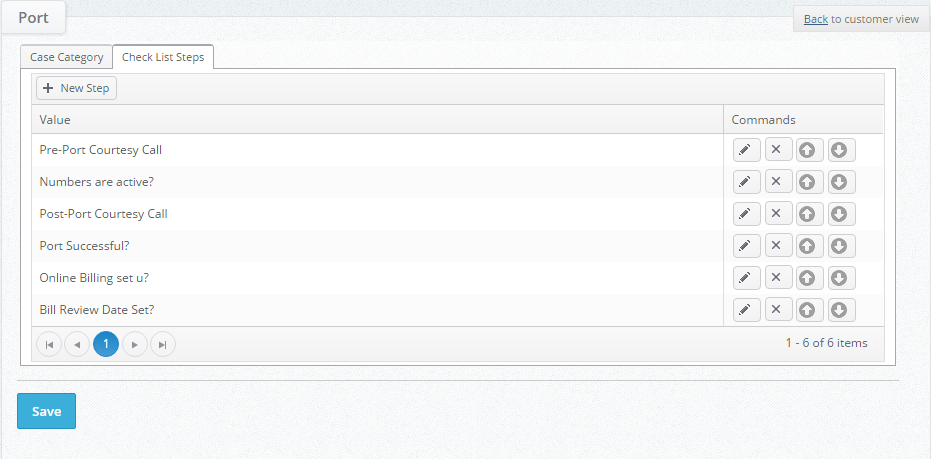Within the Layer it is possible to add check lists to each case sub-category that has been created within your instance of the Layer.
Check lists have been designed to help users ensure they do not miss any steps that are required when completing a particular case type and can help users prioritise the steps that are required.
N.B. check lists can also be added to Product Opportunity Types and Sales Orders and are different to case check lists.
Creating Check List steps
In order to add check lists to your case sub-categories you must decide which case sub-categories will require check lists, some typical examples include:
- Return Request: Ensures your return process is completed correctly
- Repair Request: Ensures your repairs are completed correctly
- Line Fault: Ensures that the key steps are carried out by the customer and internal support team prior to escalating or managing the case with the relevant supplier
- Lost Handset: Can ensure that all steps are taken to bar the original SIM and IMEI, order a replacement, raise a quotation etc.
Check lists can be added to any case sub-category that has been created in your instance of the Layer and it is good working practice to write down the process/check list steps that you would expect each user to follow and decide the order of each step.
Now that you know what check list you want to create and the steps that are involved you are ready to create the check list, to add check lists to your case categories follow these simple steps:
1.Log into the Layer
2. Press the  button from the top right hand of the screen
button from the top right hand of the screen
3. Under the Service section select Case Categories
4. Select the main case category that your sub case category belongs to
5.From the list of sub-categories select the appropriate sub case category, in our example we are going to create checklists for a porting request.

6. You will then be redirected towards the case category, from here you will see Check List Steps, select this tab
7. From this tab you will see any existing steps which can be edited or we can add in new steps, to add a step press 
8. Type in the new step and press the  button to save your step
button to save your step

9. Repeat until all the steps required for the check list have been added
10. Once all of your steps have been added they can be reordered by pressing the  arrow buttons to move items up or down.
arrow buttons to move items up or down.
11. Once all your steps have been added and you are happy with the order press Save

You have now successfully created your check list steps and we will now view these in the next section.
Checking your Check List Steps
Now that you have successfully added your check list steps to your case category it is time to view the check list, we recommend that you test this in a training company account as you will need to create a case to view your steps.
If you don't have a training or test account then alternatively you can create a case in an appropriate customer record.
To view your check list steps follow these simple steps:
1. From the NEW button on the bottom right hand-side of the screen select New Case
2. Create a case in the usual manner, however when it comes to selecting a Category, ensure you select the category that you have just created your check list against, in our example it will be a porting request case category
3. Once your case has been created and opened you will be presented with the case summary, from here you will note there is a new tab titled Check Lists, users will also note that the number of check list steps, which are in progress, will be highlighted in the tab.
4. From here you will see all of your check lists items listed under the Not Started column.

5. You have now successfully tested that your check list has been created.
Useful Articles:
Understanding how case changes affect checklists
